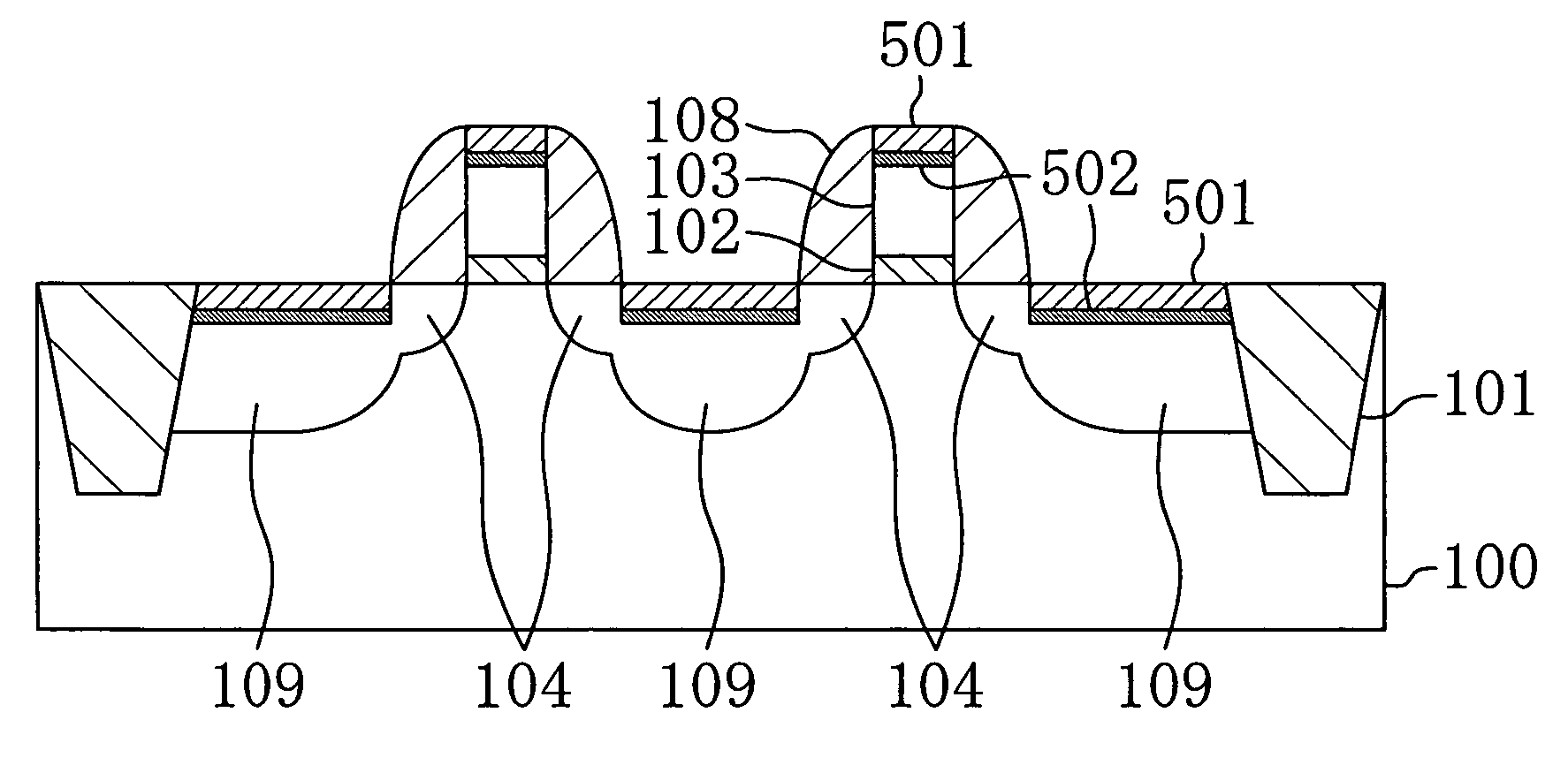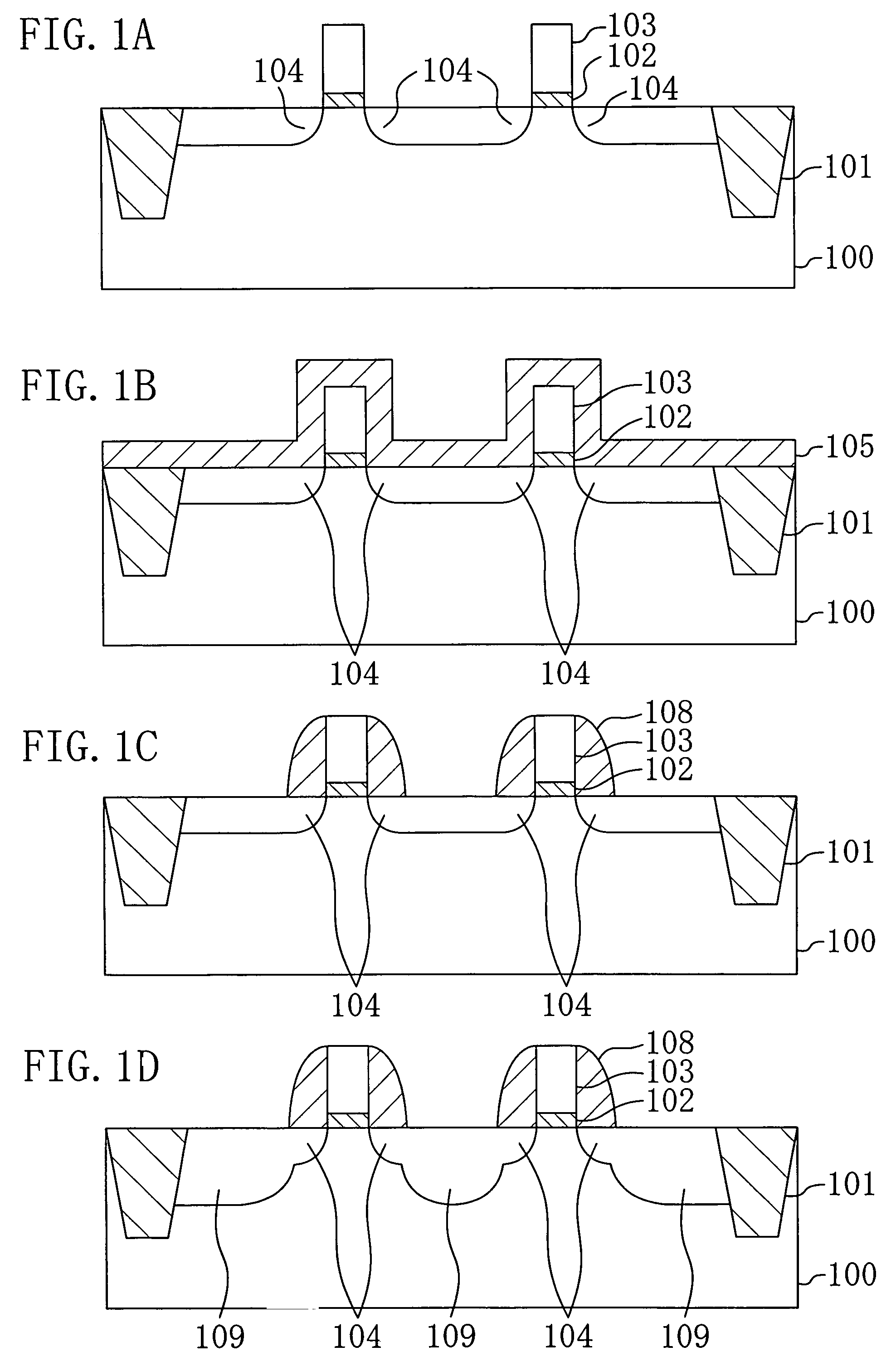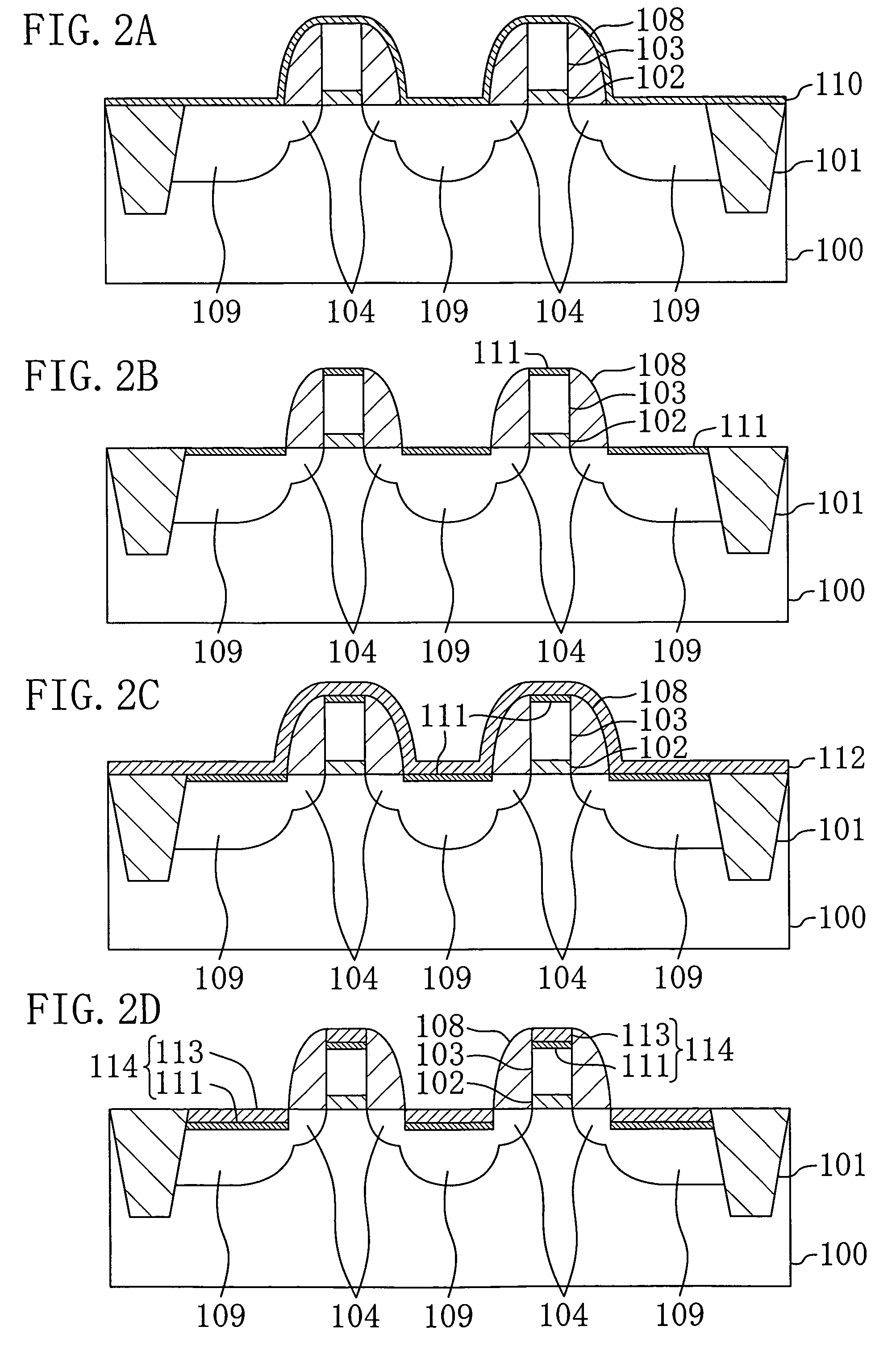Semiconductor device and method for fabricating the same
a technology of semiconductors and semiconductors, applied in the direction of semiconductor devices, electrical equipment, transistors, etc., can solve the problems of deteriorating transistor performance and increasing resistance, and achieve the effects of reducing interface resistance, excellent ni silicide layer, and high speed
- Summary
- Abstract
- Description
- Claims
- Application Information
AI Technical Summary
Benefits of technology
Problems solved by technology
Method used
Image
Examples
embodiment 1
[0029]Hereinafter, a semiconductor device according to a first embodiment of the present invention, specifically a semiconductor device including a MOS transistor, and a method for fabricating the device will be described with reference to the drawings.
[0030]FIGS. 1A through 1D and FIGS. 2A through 2D are cross-sectional views showing process steps of a method for fabricating a semiconductor device of this embodiment.
[0031]First, as shown in FIG. 1A, a shallow trench isolation 101 is formed in an upper portion of a silicon substrate 100 so as to define transistor regions. Thereafter, a gate insulating film 102 made of a silicon oxide film and having a thickness of about 2 nm is formed on the transistor regions, and then a polysilicon film having a thickness of about 140 nm is formed over the entire surface of the silicon substrate 100. Subsequently, the polysilicon film is selectively etched, thereby forming gate electrodes 103. Then, ion implantation is performed with the gate elec...
embodiment 2
[0048]Hereinafter, a semiconductor device according to a second embodiment of the present invention, specifically a semiconductor device including a MOS transistor, and a method for fabricating the device will be described with reference to the drawings.
[0049]FIGS. 4A through 4C are cross-sectional views showing process steps of a method for fabricating a semiconductor device of this embodiment.
[0050]In this embodiment, first, process steps similar to those of the method for fabricating a semiconductor device of the first embodiment shown in FIGS. 1A through 1D are performed.
[0051]After the process step shown in FIG. 1D, in a silicon substrate 100 in which components to a heavily-doped layer 109 are formed, a metal capable of forming a metal silicide having a formation enthalpy lower than that of NiSi is introduced, e.g., Hf is introduced by ion implantation, in silicon portions forming the heavily-doped layer 109 to be source / drain regions and gate electrodes 103, thereby forming a...
embodiment 3
[0062]Hereinafter, a semiconductor device according to a third embodiment of the present invention, specifically a semiconductor device including a MOS transistor, and a method for fabricating the device will be described with reference to the drawings.
[0063]FIGS. 6A through 6C are cross-sectional views showing process steps of a method for fabricating a semiconductor device of this embodiment.
[0064]In this embodiment, first, process steps similar to those of the method for fabricating a semiconductor device of the first embodiment shown in FIGS. 1A through 1D are performed.
[0065]After the process step shown in FIG. 1D, in a silicon substrate 100 in which components to a heavily-doped layer 109 are formed, a Ni silicide film 501 is formed only on the heavily-doped layer 109 to be source / drain regions and gate electrodes 103 as in the second embodiment, as shown in FIG. 6A.
[0066]Then, as shown in FIG. 6B, a metal, such as Hf, capable of forming a metal silicide having a formation ent...
PUM
 Login to View More
Login to View More Abstract
Description
Claims
Application Information
 Login to View More
Login to View More - R&D
- Intellectual Property
- Life Sciences
- Materials
- Tech Scout
- Unparalleled Data Quality
- Higher Quality Content
- 60% Fewer Hallucinations
Browse by: Latest US Patents, China's latest patents, Technical Efficacy Thesaurus, Application Domain, Technology Topic, Popular Technical Reports.
© 2025 PatSnap. All rights reserved.Legal|Privacy policy|Modern Slavery Act Transparency Statement|Sitemap|About US| Contact US: help@patsnap.com



